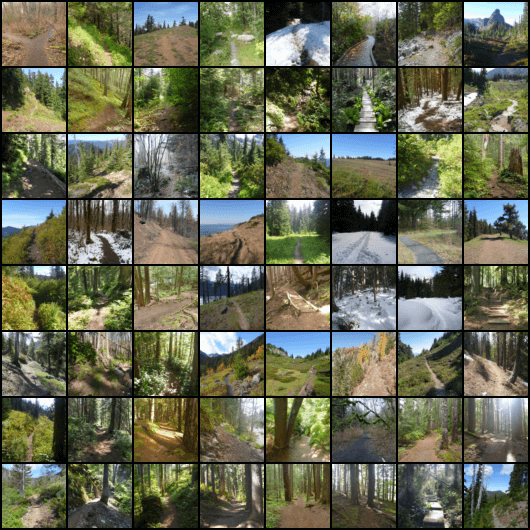One in five pictures I take while hiking are pictures of the trails themselves. Previously, I experimented with using machine learning to automatically tag those pictures. After reading about how machine learning can be used not just for image classification, but also for generating images, I was curious to see what would happen if I tried this approach on my pictures.
Here are a few randomly selected pictures of trails, out of the more than 5,000 pictures of trails I have taken over the past 10 years:

After a bit of number crunching with a Deep Convolutional Generative Adversarial Network (where part of the network is trained to fake images, while the other part is simultaneously being trained to detect fake images), here are a few randomly generated trail pictures:

There is some blurriness and some distortions, but overall the results are pretty convincing! There are forest trails, trails through alpine meadows, rocky trails, and even a few snow-covered trails. But none of these trails exist in the real world.
Notes
I ended up using PyTorch, which happened to have suitable sample code. Keras (my go-to framework) turned out to be a bit too high-level to handle this kind of problem efficiently, and Tensorflow, being more low-level, would have required more code.
Unfortunately, scaling up beyond 64x64 thumbnails to 128x128 or larger turns out to not be a simple matter of throwing more computing resources at the problem.
The network was trained for 275 epochs (iterations through the entire data set). This animation shows how the generated images improved over time:
The training was done on a fast machine with a GPU (obtained from Amazon SageMaker for a total cost of about $2); running the same code on my laptop would have taken days, rather than just under an hour.
Found this list of tips that might further improve the results.